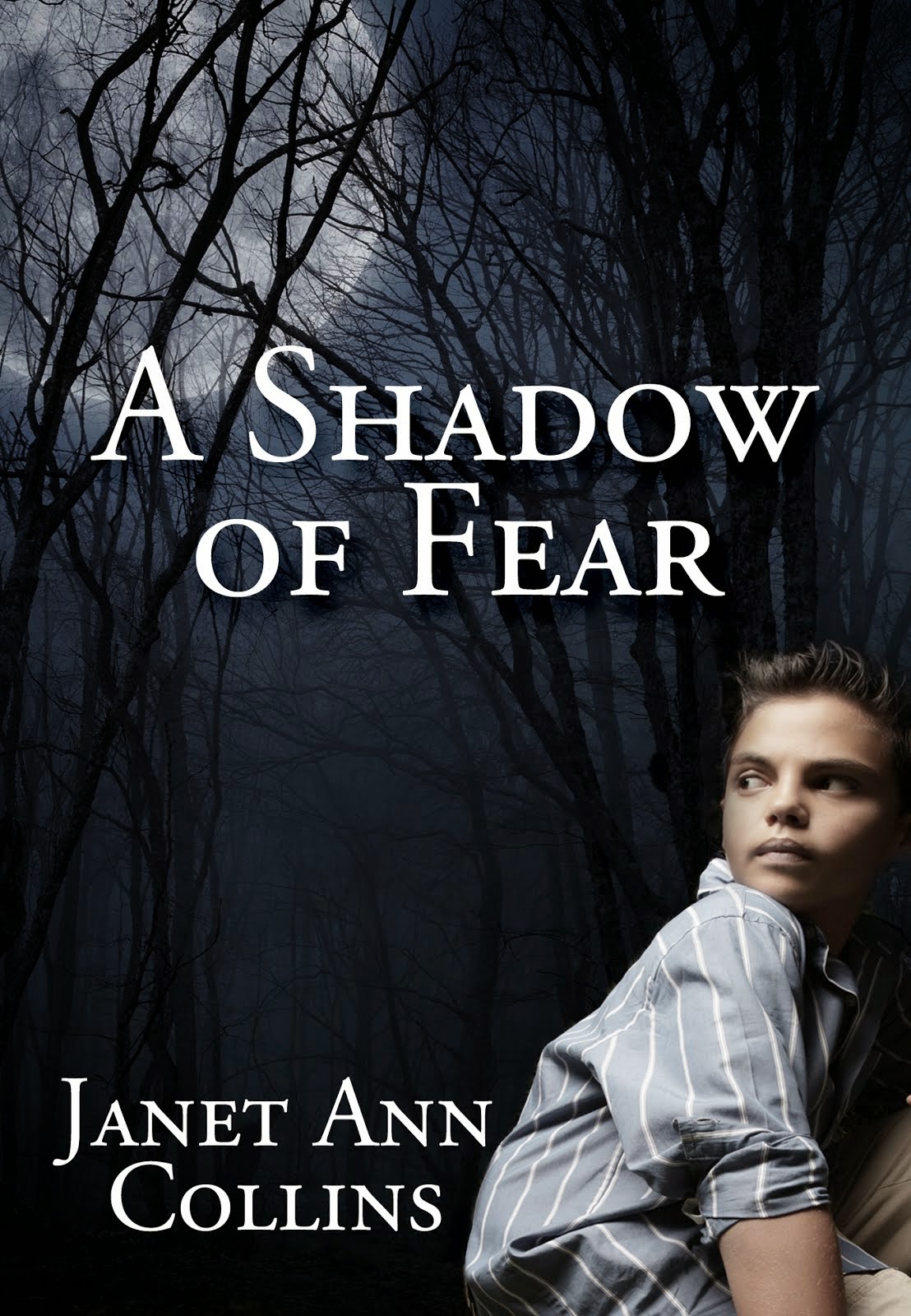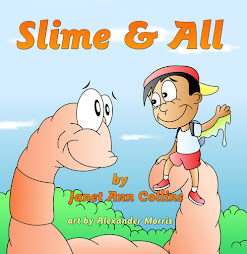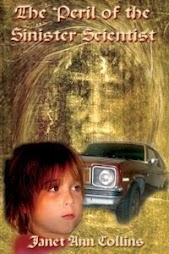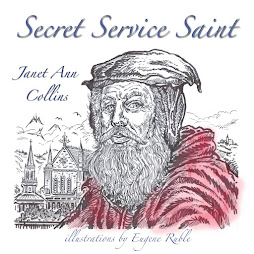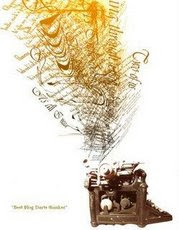Underwear? What a strange title for a post by me!
I was thinking about the difference between our cultural attitudes toward underwear when I was young, and today.
Back then if a girl heard, "I see London, I see France, I see somebody's underpants" she would have been very embarrassed. Even young girls knew never to let other people see her underpants.
Today a girl would probably never have heard those words and would wonder why anybody cared.
And in the maybe-not-so-good-old-days if a girl or woman had bit of her white slip appear below the hem of her skirt or dress, a friend would notify her.
But, to be tactful, instead of saying, "Your slip is showing" the friend would probably say, "It's snowing down south."
Then the person with that embarrassing condition would rush to the lady's room to fix the problem.
Today not only do girls feel comfortable letting underwear show, even polite adult women often wear blouses and shirts that reveal their cleavage when they bend over.
But if that seems like a big difference, just imagine what a woman from the 1800s would think of the way women dress today!
Friday, July 29, 2016
Tuesday, July 26, 2016
The Girl in the Well is Me
This is another unusual book for kids.
In The Girl in the Well is Me the main character, Kammie, was tricked by girls at her new school to participate in a fake initiation into their clique and, as a result, falls deeply into an abandoned well.
Nearly the entire book consists of her thoughts and physical sensations during the experience of being trapped in that terrible situation, not knowing if she'll ever be rescued or not.
Karen Rivers has done an amazing job of keeping the readers attention while describing the girl's suffering.
Kammie's thoughts and memories inform us of her drama-filled life up to the present time and realistically portray what it must be like, both physically and emotionally, to be trapped like that.
I was a bit disappointed that we don't find out if the girls who got her trapped in the first place have any consequences, but the story isn't about them and the main character's results are very satisfying.
But there's potential for a future story about the same characters, and I hope Karen Rivers writes it.
In The Girl in the Well is Me the main character, Kammie, was tricked by girls at her new school to participate in a fake initiation into their clique and, as a result, falls deeply into an abandoned well.
Nearly the entire book consists of her thoughts and physical sensations during the experience of being trapped in that terrible situation, not knowing if she'll ever be rescued or not.
Karen Rivers has done an amazing job of keeping the readers attention while describing the girl's suffering.
Kammie's thoughts and memories inform us of her drama-filled life up to the present time and realistically portray what it must be like, both physically and emotionally, to be trapped like that.
I was a bit disappointed that we don't find out if the girls who got her trapped in the first place have any consequences, but the story isn't about them and the main character's results are very satisfying.
But there's potential for a future story about the same characters, and I hope Karen Rivers writes it.
Saturday, July 23, 2016
Bring It Along
Here's something else that has changed a lot since I was young: what we have to carry with us.
Back then my purse would contain a make-up bag with a comb, a tube of lipstick, an eyebrow pencil and a compact, which was a round, flat case with a mirror, face powder and a powder puff inside.
The wallet in my purse had some cash, a driver's license, my library card, maybe one bank card, and some photos in it. And I might have a few tissues available, just in case they were needed.
Of course men wouldn't carry make-up, but they'd have a wallet with similar contents, and maybe a comb and handkerchief in their pockets.
And, of course everyone would have a key chain or ring with keys to their home and car.
Today we have to carry so many cards they wouldn't fit in our old wallets. Besides the kinds we used to carry, there are credit and debit cards, and cards for every store where we are likely to shop. I don't have room for any photos in my wallet anymore.
If you had told me in the 1960s that I'd be carrying a phone in my purse someday I'd have thought you were crazy, but today we all have to carry our cell phones with us everywhere.
Of course some of the additional items, like the meds I have to carry with me, are just there because I'm getting older. And bringing a few printed out family photos is a matter of choice.
What do you carry with you?
Back then my purse would contain a make-up bag with a comb, a tube of lipstick, an eyebrow pencil and a compact, which was a round, flat case with a mirror, face powder and a powder puff inside.
The wallet in my purse had some cash, a driver's license, my library card, maybe one bank card, and some photos in it. And I might have a few tissues available, just in case they were needed.
Of course men wouldn't carry make-up, but they'd have a wallet with similar contents, and maybe a comb and handkerchief in their pockets.
And, of course everyone would have a key chain or ring with keys to their home and car.
Today we have to carry so many cards they wouldn't fit in our old wallets. Besides the kinds we used to carry, there are credit and debit cards, and cards for every store where we are likely to shop. I don't have room for any photos in my wallet anymore.
If you had told me in the 1960s that I'd be carrying a phone in my purse someday I'd have thought you were crazy, but today we all have to carry our cell phones with us everywhere.
Of course some of the additional items, like the meds I have to carry with me, are just there because I'm getting older. And bringing a few printed out family photos is a matter of choice.
What do you carry with you?
Wednesday, July 20, 2016
Wow!
I just read the middle grade book, Saving Ellie, by Marilee Crow and I'm in awe. IMHO this book should become a classic.
I grew up in the 1940s and '50s so I knew about the way Jewish people had been treated in Nazi Germany, but most kids today have no idea what things were like then. This book manages to let young readers understand a lot about that situation in only about 40 pages and without going into the extremely gruesome details.
We care about the main character, Ellie. She's believable and takes some action that makes a difference so she's not just a victim. And the ending of the story is positive.
The black and white illustrations by KC Snider look a lot like the black and white photographs of that era and help to set the scenes.
With all the bad things in the news lately, it will be a big help for children who read this book to understand how wrong it is to be prejudiced against other people. I think every kid in America should read it.
I grew up in the 1940s and '50s so I knew about the way Jewish people had been treated in Nazi Germany, but most kids today have no idea what things were like then. This book manages to let young readers understand a lot about that situation in only about 40 pages and without going into the extremely gruesome details.
We care about the main character, Ellie. She's believable and takes some action that makes a difference so she's not just a victim. And the ending of the story is positive.
The black and white illustrations by KC Snider look a lot like the black and white photographs of that era and help to set the scenes.
With all the bad things in the news lately, it will be a big help for children who read this book to understand how wrong it is to be prejudiced against other people. I think every kid in America should read it.
Labels:
Book review,
books for kids,
KC Snider,
Marilee Crow,
Saving Ellie
Saturday, July 16, 2016
Already!
I'm one of those people who start Christmas shopping in the Summer. (There are usually lots of sales in August.) So you shouldn't be surprised that I'm reviewing a Christmas book here now.
The Best Kind of String by Janene Dubbeld is a picture book about the joy of giving.
Getting a package all tied up with string (Remember that song about favorite things?) is a pleasure, but making other people happy is an even greater one. And this book lets kids know about that kind of joy.
The book follows children who try to decide what to give to people they love. Each one discovers that showing their love is the greatest gift.
The love that ties people together is the best kind of string.
KC Snider's lively illustrations show kids of various ethnicities giving gifts from their hearts to people they love. And a chain of yarn across the bottom of each picture ties in with the title and theme of the story.
This book will help lots of kids understand that possessions aren't nearly as important as love, and that making other people happy by giving is better than getting. I hope lots of people will give copies of it to kids well in advance of the holidays.
The Best Kind of String by Janene Dubbeld is a picture book about the joy of giving.
Getting a package all tied up with string (Remember that song about favorite things?) is a pleasure, but making other people happy is an even greater one. And this book lets kids know about that kind of joy.
The book follows children who try to decide what to give to people they love. Each one discovers that showing their love is the greatest gift.
The love that ties people together is the best kind of string.
KC Snider's lively illustrations show kids of various ethnicities giving gifts from their hearts to people they love. And a chain of yarn across the bottom of each picture ties in with the title and theme of the story.
This book will help lots of kids understand that possessions aren't nearly as important as love, and that making other people happy by giving is better than getting. I hope lots of people will give copies of it to kids well in advance of the holidays.
Wednesday, July 13, 2016
Numbers We Need
For a while when I was a kid we lived in a very small town. The phone numbers there only had four numerals and when you picked up the receiver you'd hear someone say, "Operator," then you would state the number you wanted to call. That was in the late 1940s. Back then most places already had two letters and a number before the four digits in each phone number.
And I remember reading somewhere that phone prefixes used letters because they believed most people couldn't remember more than five numbers in a row. Now we use all numbers, also have a three digit area code, and need to dial "1" before that to call out of our own areas. We must have become smarter, right?
Also when I was a kid, zip codes didn't exist. Sometimes we'd get letters addressed to the same street and house number in a city with the same name as our town in another state. Apparently the people who sorted the mail would sometimes confuse Cal with Fla. (We used three letters for states back then. ) Having zip codes has prevented a lot of confusion.
Just a few decades ago I would never have imagined being able to remember web addresses that started with http://www. and went on to include several words. My own blog address, https://www.onwordsblog.blogspot.com would have seemed impossibly long.
Maybe we really have become smarter than we used to be.
I'm glad we no longer have to type in all of that for every web address or our brains would become so full of gibberish that in a few more decades there wouldn't be room for anything else.
And I remember reading somewhere that phone prefixes used letters because they believed most people couldn't remember more than five numbers in a row. Now we use all numbers, also have a three digit area code, and need to dial "1" before that to call out of our own areas. We must have become smarter, right?
Also when I was a kid, zip codes didn't exist. Sometimes we'd get letters addressed to the same street and house number in a city with the same name as our town in another state. Apparently the people who sorted the mail would sometimes confuse Cal with Fla. (We used three letters for states back then. ) Having zip codes has prevented a lot of confusion.
Just a few decades ago I would never have imagined being able to remember web addresses that started with http://www. and went on to include several words. My own blog address, https://www.onwordsblog.blogspot.com would have seemed impossibly long.
Maybe we really have become smarter than we used to be.
I'm glad we no longer have to type in all of that for every web address or our brains would become so full of gibberish that in a few more decades there wouldn't be room for anything else.
Saturday, July 9, 2016
The Scandalous Sisterhood of Prickwillow Place
I've read other books for kids that take a dark but humorous spin on times past, but this one is different. For one thing, it's much better written than the others. And the plot is exciting.
The Scandalous Sisterhood of Prickwillow Place is about girls in a Victorian residential school for young ladies who discover the dead bodies of their headmistress and a man.
The girls don't want to be separated and sent home, so they decide to hide the bodies and pretend the headmistress is still alive.
But how can they solve the mystery of who committed the murders while making everything seem normal?
The girls all have descriptive names that make it easy to keep track of which one we're reading about, and the characters are both believable and amusing.
The plot gets complicated, but not too complicated for readers to follow easily, and the book is a page turner.
Now I'm eager to read more books by the author, Julie Berry.
The Scandalous Sisterhood of Prickwillow Place is about girls in a Victorian residential school for young ladies who discover the dead bodies of their headmistress and a man.
The girls don't want to be separated and sent home, so they decide to hide the bodies and pretend the headmistress is still alive.
But how can they solve the mystery of who committed the murders while making everything seem normal?
The girls all have descriptive names that make it easy to keep track of which one we're reading about, and the characters are both believable and amusing.
The plot gets complicated, but not too complicated for readers to follow easily, and the book is a page turner.
Now I'm eager to read more books by the author, Julie Berry.
Wednesday, July 6, 2016
What Goes Around...
Remember the old saying, "What goes around comes around?"
Back in the 1940s and '50s my mother used to say, "If you keep anything long enough it comes back in style."
She was sort of right.
In the 1800s and early 1900s women wore long dresses with full skirts and tried to make their waists look as small as possible. Only "women of ill repute" would let much of their bodies show.
Then in the 1920s women wore much shorter dresses with no waistlines at all. When those clothes came into fashion they probably horrified older ladies.
And girls couldn't wear pants except as underwear. Later those became acceptable, but only in casual circumstances. In the 1940s we'd change into our jeans or pedal pushers for play, but always wore skirts or dresses to school and women wore those to work.
In the 1950s when I was a teenager it again became fashionable to wear longer, full skirts and wide, "cinch belts" to make waistlines look as small as possible. And girdles, though less restrictive than corsets, were the norm.
Then in the '60s mini skirts became the fashion, and women began wearing slacks and pant suits for dressy occasions.
Today girls and women aren't required to follow the latest fashions and we can wear pretty much anything we want. Our grandmothers and great grandmothers would be horrified to see how lots of young women dress now, but I have seen some girls wearing full skirts and wide belts.
I wonder if styles will cycle again and we'll be expected to wear long dresses soon. I hope women don't go back to wearing corsets!
Back in the 1940s and '50s my mother used to say, "If you keep anything long enough it comes back in style."
She was sort of right.
In the 1800s and early 1900s women wore long dresses with full skirts and tried to make their waists look as small as possible. Only "women of ill repute" would let much of their bodies show.
Then in the 1920s women wore much shorter dresses with no waistlines at all. When those clothes came into fashion they probably horrified older ladies.
And girls couldn't wear pants except as underwear. Later those became acceptable, but only in casual circumstances. In the 1940s we'd change into our jeans or pedal pushers for play, but always wore skirts or dresses to school and women wore those to work.
In the 1950s when I was a teenager it again became fashionable to wear longer, full skirts and wide, "cinch belts" to make waistlines look as small as possible. And girdles, though less restrictive than corsets, were the norm.
Then in the '60s mini skirts became the fashion, and women began wearing slacks and pant suits for dressy occasions.
Today girls and women aren't required to follow the latest fashions and we can wear pretty much anything we want. Our grandmothers and great grandmothers would be horrified to see how lots of young women dress now, but I have seen some girls wearing full skirts and wide belts.
I wonder if styles will cycle again and we'll be expected to wear long dresses soon. I hope women don't go back to wearing corsets!
Saturday, July 2, 2016
Bubble Gum, Bubble Gum In A Dish
Preschoolers will love this book. It helps them learn to count and identify colors in a fun way.
I wish I'd had it back when I was teaching preschool.
The book begins with a big dish full of bubble gum balls. As the pages are turned, each number and color of bubble gum balls is taken out and held by a different child, who then blows a bubble.
The cute kids in the illustrations are diverse so most youngsters will be able to identify with someone in the book.
At the end kids are challenged to recognize the numbers and colors and then ...
The last page is a fun surprise.
Tracey M. Cox is both the author and illustrator and does an excellent job at both.
I wish I'd had it back when I was teaching preschool.
The book begins with a big dish full of bubble gum balls. As the pages are turned, each number and color of bubble gum balls is taken out and held by a different child, who then blows a bubble.
The cute kids in the illustrations are diverse so most youngsters will be able to identify with someone in the book.
At the end kids are challenged to recognize the numbers and colors and then ...
The last page is a fun surprise.
Tracey M. Cox is both the author and illustrator and does an excellent job at both.
Subscribe to:
Posts (Atom)







